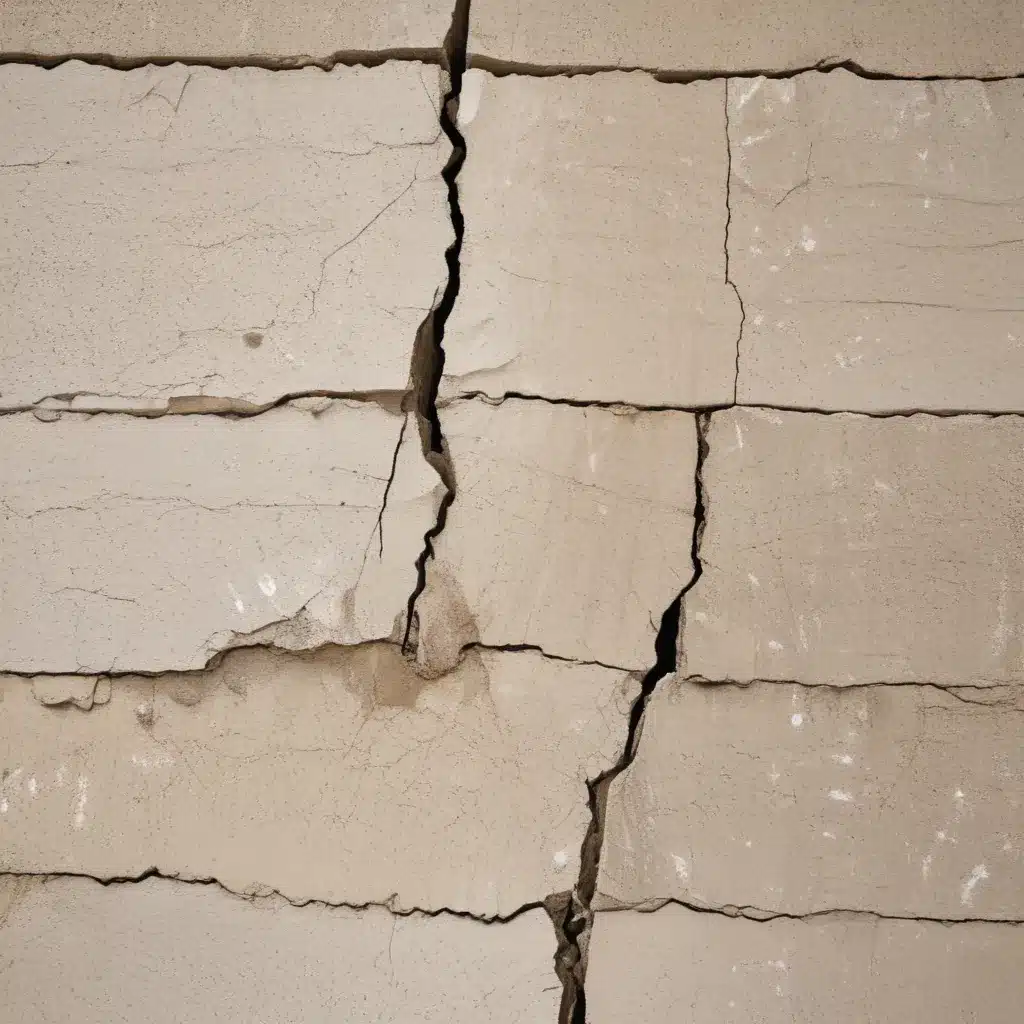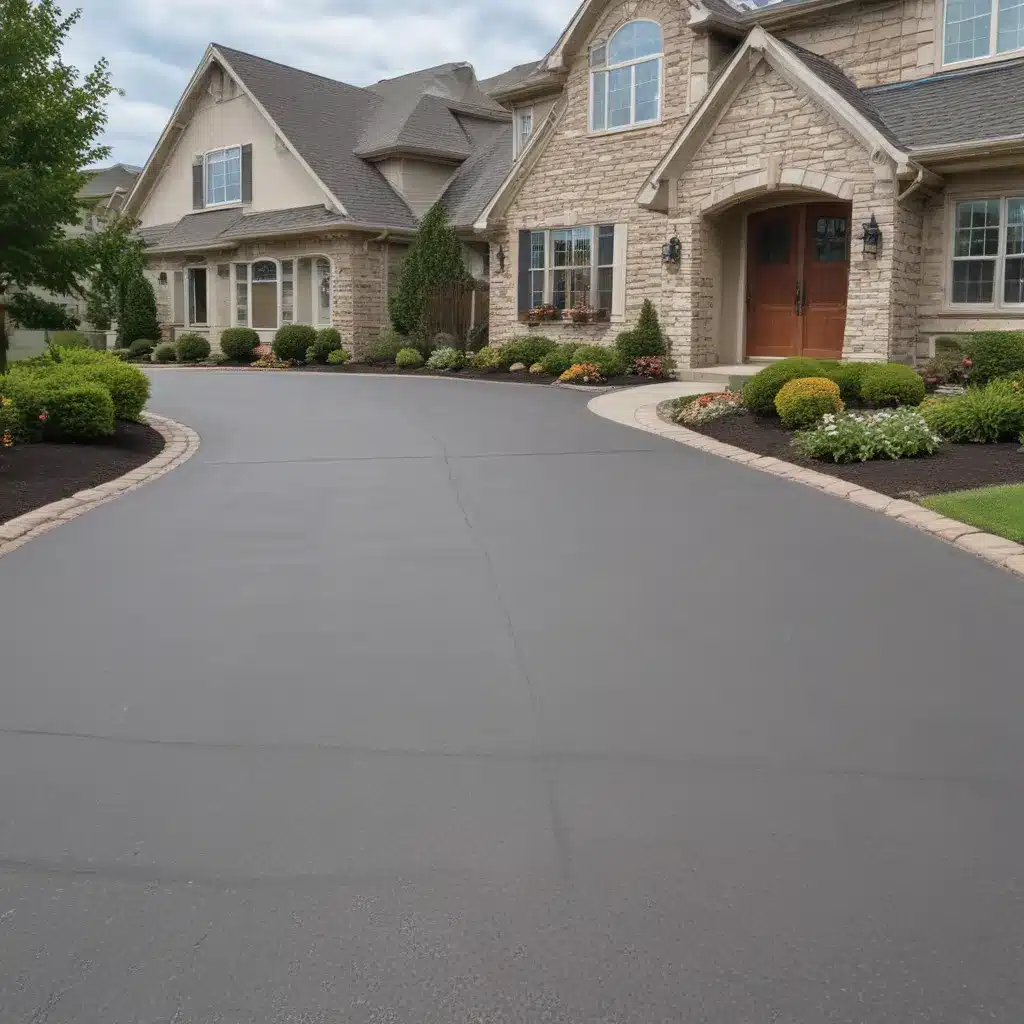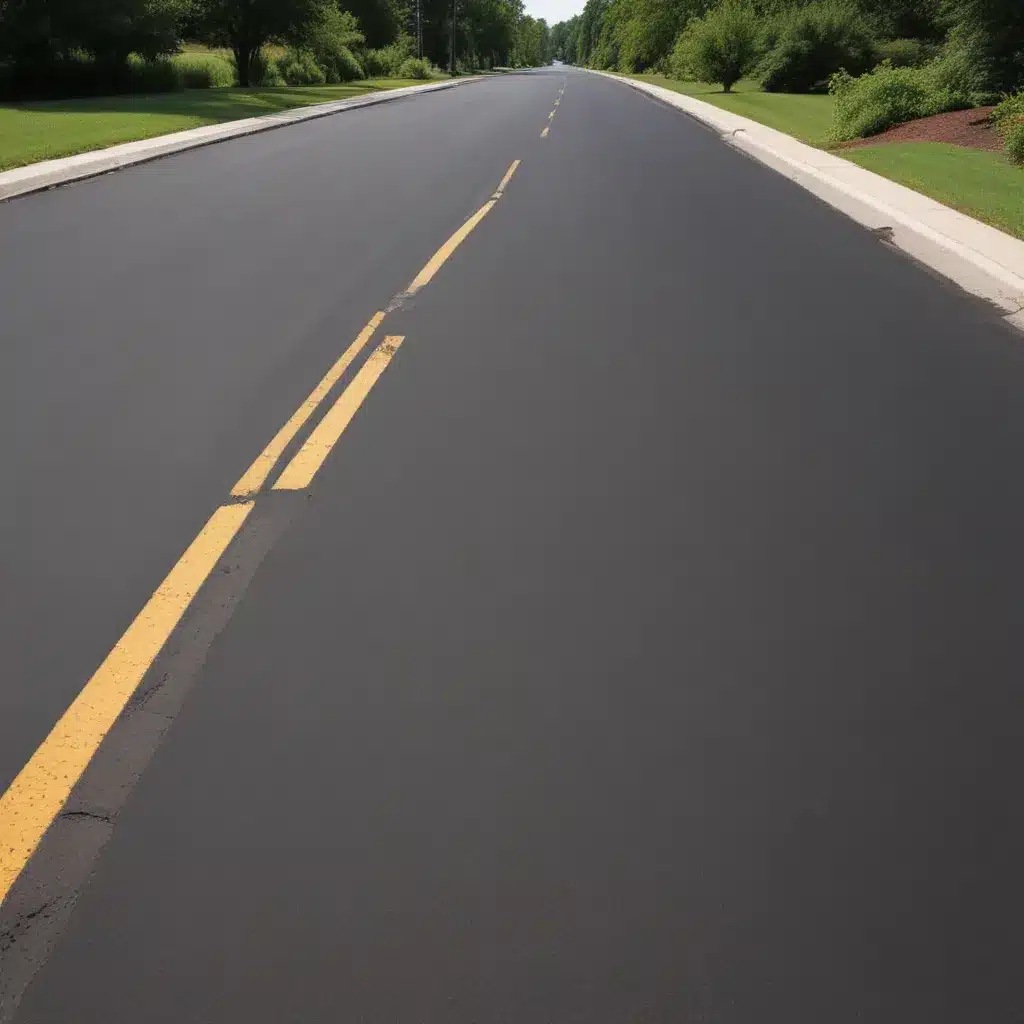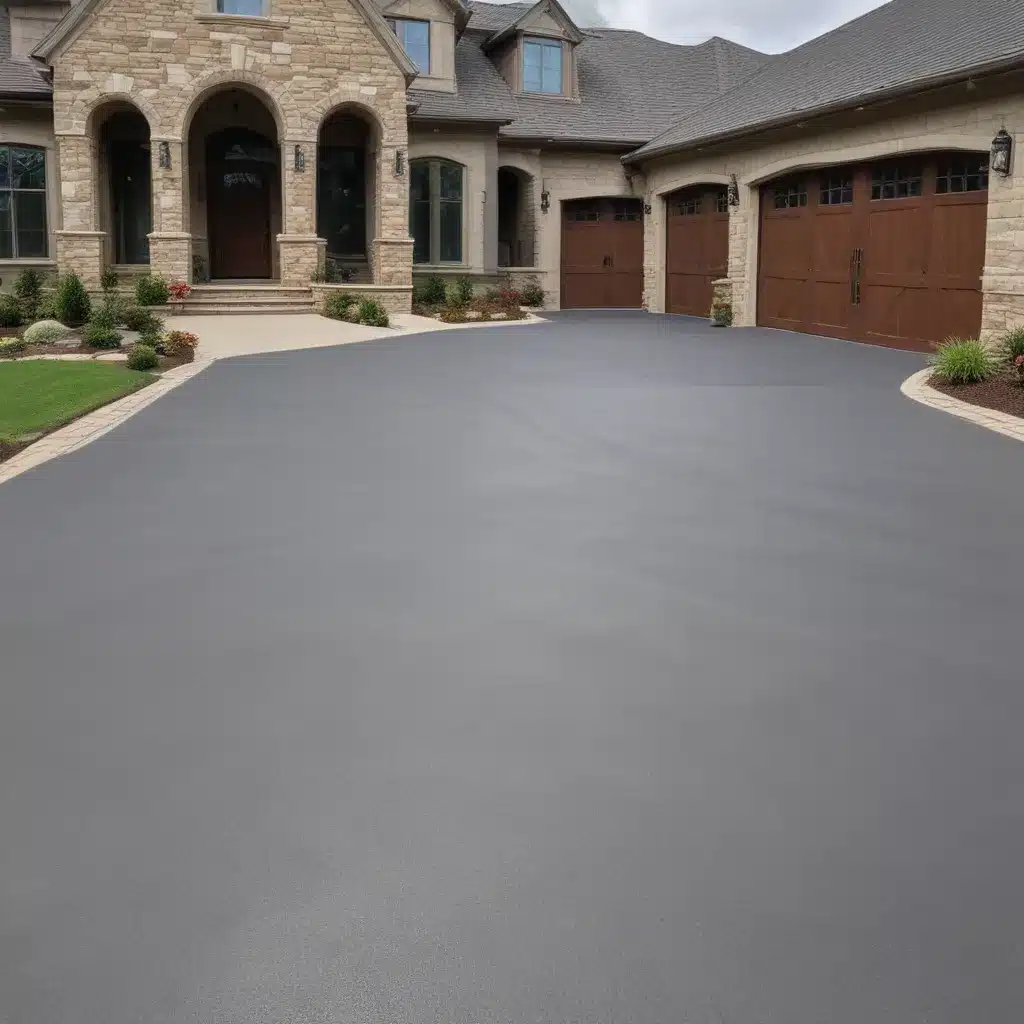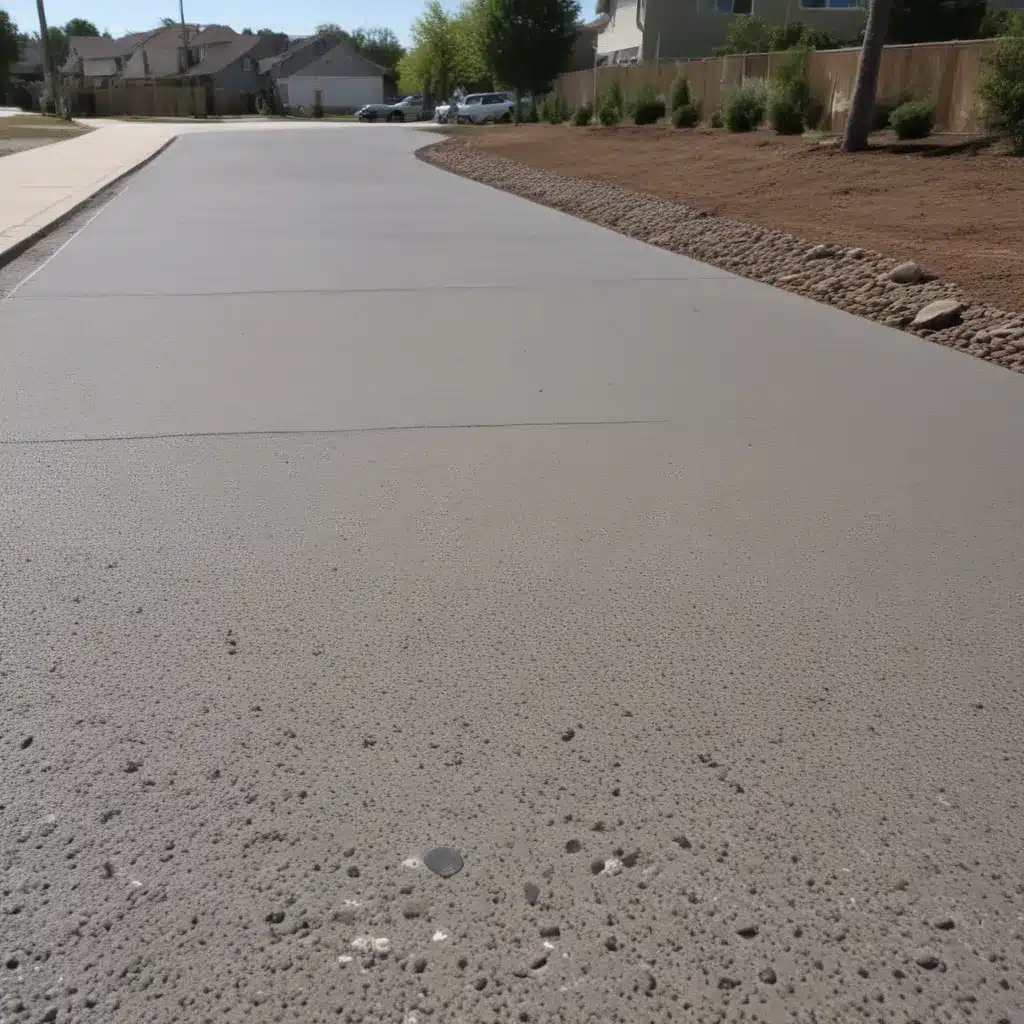The Perils of Neglecting Driveway Cracks
As the owner of NW Driveways, I’ve seen my fair share of driveway woes over the years. One of the most common – and unfortunately, most neglected – issues I encounter is the dreaded driveway crack. You know, those unsightly little lines that snake their way across the surface, like tiny fault lines just waiting to open up and swallow your car whole.
It’s easy to brush them off, I get it. “They’re just cracks, how bad can they be?” Well, my friends, let me tell you – those innocent-looking fractures can quickly turn into a veritable nightmare if left unchecked. Picture this: you’re backing out of the driveway one morning, minding your own business, when suddenly your rear tire hits a crack and – WHAM! – your car lurches to the side, narrowly avoiding a collision with your neighbor’s prized azalea bushes.
Or maybe it’s raining, and as you’re walking to your front door, your foot catches in a crack, sending you tumbling head-over-heels. Not exactly the graceful entrance you were going for, is it? And let’s not forget the damage those cracks can do to your vehicle over time – alignment issues, suspension problems, and the dreaded tire wear that leaves you shopping for new rubber more often than you’d like.
But the real kicker? Those little cracks don’t stay little for long. Left unattended, they’ll only grow bigger and more menacing, eventually compromising the structural integrity of your entire driveway. Suddenly, you’re looking at a full-blown replacement job, with all the time, money, and hassle that entails.
Addressing Driveway Cracks Before They Cause Chaos
So, what’s the solution, you ask? Simple – nip those cracks in the bud before they have a chance to wreak havoc. And I’m not just talking about slapping on a quick patch job and calling it a day. No, sir, we’re going for a more comprehensive approach here.
First and foremost, it’s essential to identify the root cause of the cracks. Are they the result of natural wear and tear, poor installation, or something more sinister, like a shifting foundation? (Spoiler alert: that last one is a problem you definitely don’t want to ignore.) Once you’ve pinpointed the issue, you can start putting together a plan of attack.
Now, I know what you’re thinking – “But fixing driveway cracks sounds like a huge pain in the, well, you know. Do I really have to go through all that trouble?” And to that, I say: absolutely! Trust me, the short-term investment of time and money will pay off big-time in the long run. After all, preventing a complete driveway overhaul is well worth the effort, wouldn’t you agree?
Repairing Driveway Cracks: A Step-by-Step Guide
Okay, so you’re convinced that addressing those pesky cracks is the way to go. Great! Let’s dive into the nitty-gritty of how to get the job done right.
First things first, you’ll need to clean the affected area thoroughly. That means sweeping away any loose debris, using a stiff-bristled brush to scrub out any grime or oil buildup, and rinsing the whole thing down with a hose. This step is crucial, as you want to ensure the repair material has a nice, clean surface to adhere to.
Next, it’s time to choose your weapon of choice. There are a few different options when it comes to driveway crack repair, each with its own pros and cons. Epoxy-based fillers, for example, offer superior strength and durability, but can be a bit tricky to apply. Polyurethane sealants, on the other hand, are easier to work with but may not hold up as well over time.
Personally, I’m a big fan of the good old-fashioned asphalt-based crack filler. It’s relatively inexpensive, easy to apply, and provides a nice, seamless finish that blends right in with the rest of your driveway. Plus, it’s flexible enough to accommodate the natural expansion and contraction of the pavement, so you’re less likely to see those pesky cracks reappear down the line.
Whichever route you choose, make sure to carefully follow the manufacturer’s instructions for proper application. Rushing through this step can lead to all sorts of problems, from poor adhesion to an unsightly finish. And don’t forget to let the repair material fully cure before driving on it or subjecting it to any heavy loads.
Preventing Future Cracks: Maintenance and Proactive Measures
Okay, so you’ve tackled those existing cracks – great work! But the job isn’t quite done yet. If you really want to keep your driveway looking its best for years to come, you’ll need to implement a regular maintenance routine.
That means keeping a close eye on the surface, looking for any new cracks or signs of wear and tear. As soon as you spot something, address it right away – don’t let those little fractures fester and grow. A quick patch job here and there can go a long way in preserving the overall integrity of your driveway.
And don’t forget about the bigger picture, either. Things like proper drainage, regular sealcoating, and even occasional pressure washing can all help extend the life of your driveway and prevent those pesky cracks from popping up in the first place.
Now, I know what you’re thinking – “Maintenance? Really? Isn’t that just more work and hassle?” And to that, I say: yes, it is. But trust me, it’s a heck of a lot easier than dealing with a full-blown driveway replacement down the line. Think of it as an investment in the long-term health and beauty of your home’s exterior.
Real-Life Driveway Crack Success Stories
Don’t just take my word for it, though. Let me share a few real-life examples of how addressing driveway cracks can make a world of difference.
Take my good friend, Sarah, for instance. She noticed a few small cracks starting to form in her driveway a couple of years ago, but being the busy mom that she is, she just didn’t have the time or energy to deal with it. Fast forward to last spring, when those innocent-looking cracks had turned into a veritable minefield of pavement fractures. Poor Sarah was literally tip-toeing through her own driveway, terrified of taking a tumble.
Luckily, she reached out to me for help, and we were able to get those cracks taken care of in no time. A thorough cleaning, a bit of high-quality asphalt filler, and voila – her driveway looked good as new. And the best part? Sarah reports that she hasn’t seen a single crack reappear since the repair. Talk about a life-changing transformation!
Then there’s my neighbor, Bob, who took a slightly different approach. When he first noticed some cracks forming, he decided to get proactive and have his driveway sealcoated. Now, I know what you’re thinking – “Sealcoating? Isn’t that just a fancy way to waste money?” But in Bob’s case, it’s been a game-changer.
By creating a protective barrier on the surface of his driveway, the sealcoating has helped prevent any new cracks from forming. And even better, it’s made the existing fractures much less noticeable, giving his entire outdoor space a fresh, polished look. Bob swears by his decision, and I have to say, his driveway is the envy of the entire neighborhood.
Wrapping It Up: The Benefits of Addressing Driveway Cracks
So, there you have it, folks – the lowdown on preventing long-term issues by fixing driveway cracks. And let me tell you, the benefits of taking a proactive approach are well worth the effort.
Not only will you save yourself the headache (and the backache) of dealing with a crumbling, treacherous driveway, but you’ll also be protecting the value of your home. After all, who wants to be the house on the block with the unsightly, cracked-up driveway? Not me, that’s for sure.
And let’s not forget the safety factor. Those pesky cracks can pose a real hazard, whether you’re backing out of the garage or taking a leisurely stroll to the mailbox. Addressing them head-on means you can rest easy, knowing your family and guests are safe from any unexpected tumbles or jolts.
So, what are you waiting for? Grab your tool belt, head out to the driveway, and let’s get to work! Trust me, your future self will thank you. And who knows, maybe you’ll even impress the neighbors with your newfound driveway maintenance expertise. It’s a win-win all around.

